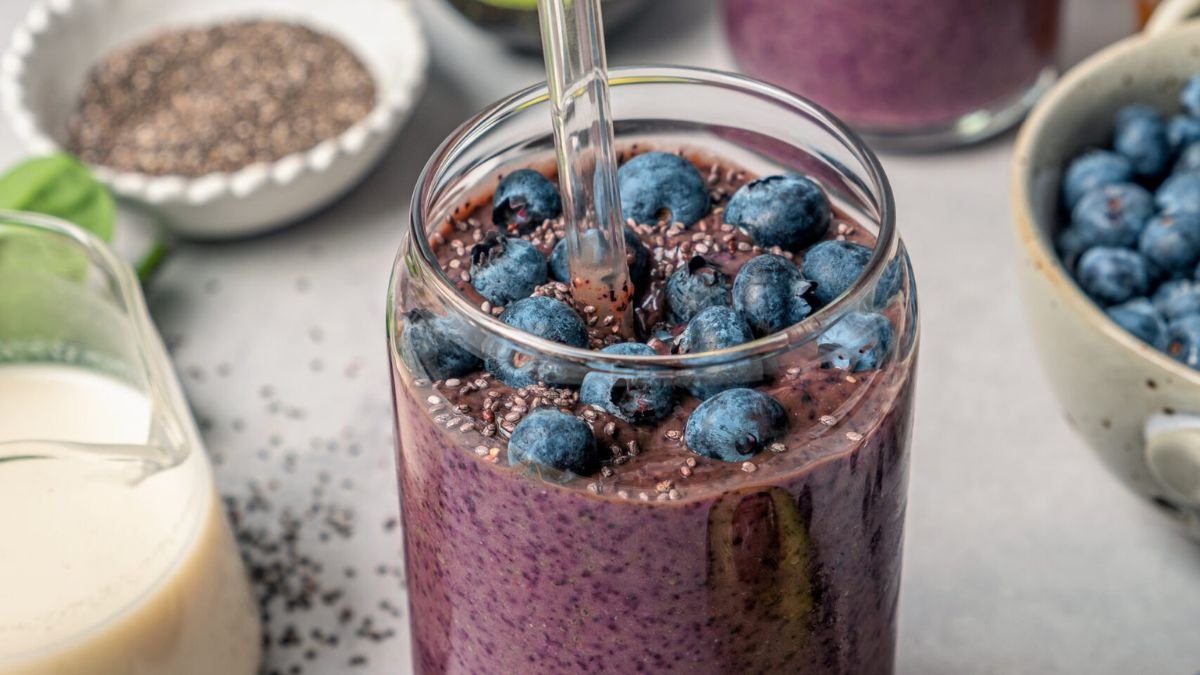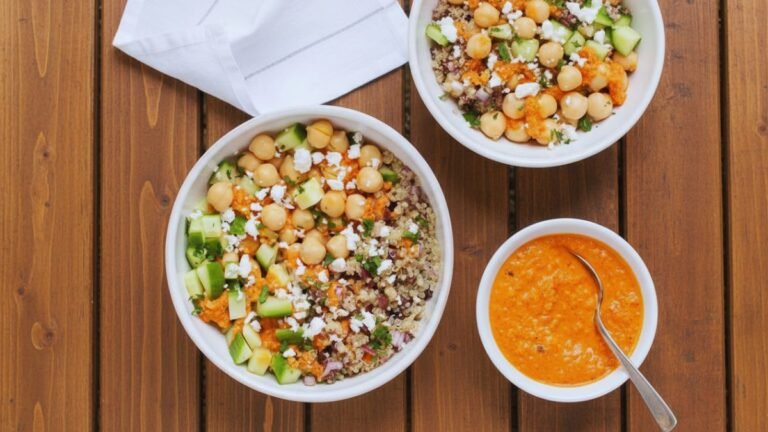Smoothie with Spinach, Berries, and Chia Seeds

This simple and nutrient-dense smoothie combines antioxidant-rich berries, iron-packed spinach, and fiber-filled chia seeds for a healthy meal or snack. The recipe is highly customizable and can be adjusted to suit your taste or dietary needs.
Ingredients
- 1 cup mixed berries (fresh or frozen)
- 1 cup fresh baby spinach
- 1 tablespoon chia seeds
- 1 cup milk of your choice (dairy, almond, oat, or soy)
- 1/2 ripe banana (optional, for added creaminess and sweetness)
- 1/2 cup Greek yogurt (optional, for extra protein and creaminess)
- 1 teaspoon honey or maple syrup (optional, to taste)
- A few ice cubes (optional, for a thicker, colder smoothie)
Instructions
- Combine ingredients: Add all ingredients—berries, spinach, chia seeds, milk, and any optional add-ins—to a blender.
- Blend until smooth: Start blending on a low speed to break down the frozen fruit and spinach, then increase to high until the mixture is smooth and creamy. This typically takes 30 to 60 seconds.
- Adjust consistency: If the smoothie is too thick, add a little more milk. For a thinner smoothie, or if using fresh berries, add a few ice cubes to thicken it.
- Serve immediately: Pour the smoothie into a glass and enjoy right away for the best flavor and texture.
Customization and substitutions
- For more protein: Add a scoop of your favorite protein powder or 1/2 cup of Greek yogurt.
- For more healthy fats: Blend in 1 tablespoon of almond butter, peanut butter, or avocado.
- To replace banana: If you prefer not to use bananas, you can get a creamy texture by using frozen mango, avocado, or silken tofu.
- Boost the greens: For an extra nutritional kick, consider adding a handful of kale along with the spinach.
- Add spice: A small piece of fresh ginger can add a refreshing, anti-inflammatory kick.
Is it okay to put raw chia seeds in a smoothie?
Yes, it is perfectly safe and common to put raw chia seeds in a smoothie. Many people add them for their nutritional value, which includes fiber, omega-3 fatty acids, and protein.
The primary difference when adding raw versus soaked chia seeds is texture and consistency.
- Raw chia seeds: Adding them directly to the blender will give your smoothie a slightly crunchy texture.
- Soaked chia seeds: Soaking them for 10–30 minutes before blending causes them to swell and form a gel. This creates a much thicker, smoother, and more pudding-like consistency.
Is it okay to put raw spinach in a smoothie?
It is safe to use raw spinach in a smoothie, and it is a great way to add nutrients to your diet. A common concern is the oxalate content in raw spinach, but for most people, this is not an issue.
Considerations for raw spinach
- Oxalates: Raw spinach contains oxalic acid, which can interfere with the absorption of certain minerals like calcium and iron. Lightly cooking spinach can significantly reduce the oxalate levels. For most healthy people, consuming moderate amounts of raw spinach in smoothies is not a problem, especially if paired with vitamin C-rich fruits, which help with iron absorption.
- Taste: In moderate quantities, spinach is virtually tasteless in a smoothie. Adding ingredients like pineapple or banana helps to mask any green flavor.
- Nutrient absorption: While cooking can make some nutrients, like iron, more bioavailable, blending raw spinach is an excellent way to get antioxidants like lutein.
What not to mix together in smoothies?
While smoothies are versatile, certain combinations can lead to poor flavor, digestive issues, or an unhealthy nutrient profile.
Unhealthy additions
- Fruit juice: Using fruit juice as a liquid base adds unnecessary sugar without any of the fruit’s beneficial fiber. Use whole fruit and a healthier liquid like water or milk instead.
- Flavored yogurt: These often contain high levels of added sugar and artificial ingredients. Opt for plain Greek yogurt or a plant-based alternative.
- Excess sweeteners: Even “healthy” sweeteners like agave nectar or honey can turn your smoothie into a sugar bomb. Rely on whole fruits for sweetness instead.
- Too much fat: While healthy fats from nuts, seeds, or avocado are great, adding too many high-fat ingredients can make your smoothie excessively high in calories.
Poor combinations (texture or flavor)
- Melons: Certain melons like watermelon are not recommended for smoothies because they do not blend well with other fruits and can create a watery, inconsistent texture.
- Fibrous, stringy vegetables: Vegetables like celery, fennel, and string beans do not blend well and can leave your smoothie with an unappealing texture.
- Dairy with citrus (Ayurveda perspective): Some traditional health systems, like Ayurveda, advise against combining dairy with highly acidic fruits like oranges, lemons, and pineapple, believing it can impair digestion. However, in most cases, this is not a concern, and the digestive system can handle the combination.
If you’re looking for more breakfast recipes like Avocado Toast on Whole-Grain Bread and High-Fiber Granola with Greek Yogurt subscribe to join us.






